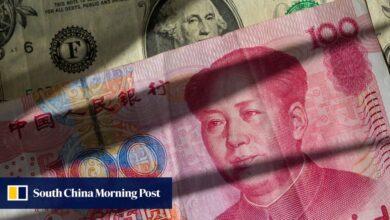Opinion | Why Chinese consumption cannot completely be blamed for global imbalances

China enjoys world-class transport infrastructure and mobile and internet coverage. The remarkably low headline consumption rate is simply at odds with observations. China’s actual household consumption is much higher when properly adjusted for social transfers, purchasing power and housing expenditure.
Chinese households receive benefits such as subsidised education and healthcare provided by the state. Such social transfers in kind (STIK) were about 6.2 per cent of China’s GDP in 2019 and 6.4 per cent in 2021, up from 3 per cent two decades ago.
As richer countries with generous welfare programmes tend to show higher STIK, comparing China’s STIK-boosted consumption rate won’t narrow its gap with the advanced economies. But it could bring it closer to the rates in developing countries.
Even so, STIK only covers the transfers and consumption provided by governments and non-profit organisations. Chinese businesses are also more likely to provide employee welfare such as subsidised lunches and staff dormitories than their foreign counterparts. These, however, count towards Chinese business expenses rather than household consumption. Thus, adding all social transfers could lift China’s consumption rate by at least 6 percentage points.
Besides, a proper global comparison of consumption should consider the lower prices in poorer countries. After we made purchasing power parity (PPP) adjustments using the World Bank’s International Comparison Programme 2021 prices, China’s consumption in residence, education, leisure and healthcare was more than double those using the market exchange rate. Given the lower inflation in China in the past three years, such adjustments should be even more pronounced today.
Household consumption in education, culture and leisure is also the lowest among our sample countries even after PPP adjustments, despite China’s compulsory schooling and world-class higher education. We suspect the PPP adjustments there may not go far enough to reflect the true spending picture.
We calculate China’s housing expenditure – as in the rent paid or owner-equivalent rent – at around 7 per cent of GDP. This is less than half of the Organisation for Economic Cooperation and Development average and likely to be underestimated.
Purchases of new homes are treated as investments instead of consumption. In China, 80 per cent of home purchases by floor area before the housing market collapse and 60 per cent of current home purchases are for new homes, ratios higher than in more mature housing markets. Buying a home is indisputably the single largest expenditure item for many Chinese families.
Owner-equivalent rents are also likely to be undercounted. Rental yields are notoriously low in China for many reasons, including school admission policies that favour the children of homeowners in the area over renters. Owner-equivalent rents are computed mostly based on homes’ historical values, which are lower than current home values. While efforts are being made to improve the statistics of housing consumption, this is an area that deserves careful study for both academic and policy purposes.
Even after adjustments, China’s household consumption rate remains low for a variety of reasons. For example, agricultural production is easily captured in GDP but not self-produced and bartered rural consumption. The saving rates of migrant workers are also much higher than for both urban and rural residents.
China’s high home prices and household leverage crowd out household consumption. Large income and wealth gaps can also depress spending. So China’s low consumption is not the result of policy design. Beijing policymakers can do a lot more to boost consumption, for example, by providing a better social safety net and easing urban residency restrictions.
Once properly adjusted, China’s consumption rate is higher than the headline data indicates. One should also be mindful that comparisons of consumption rates can prove tricky – Singapore, for instance, also has an exceptionally low consumption rate, at about 35 per cent of GDP. China’s household consumption should not bear the full blame for global imbalances.
Gene Ma is head of China research at the New York-based Institute of International Finance
Yu Yongding is a fellow at the Chinese Academy of Social Sciences
Source link






